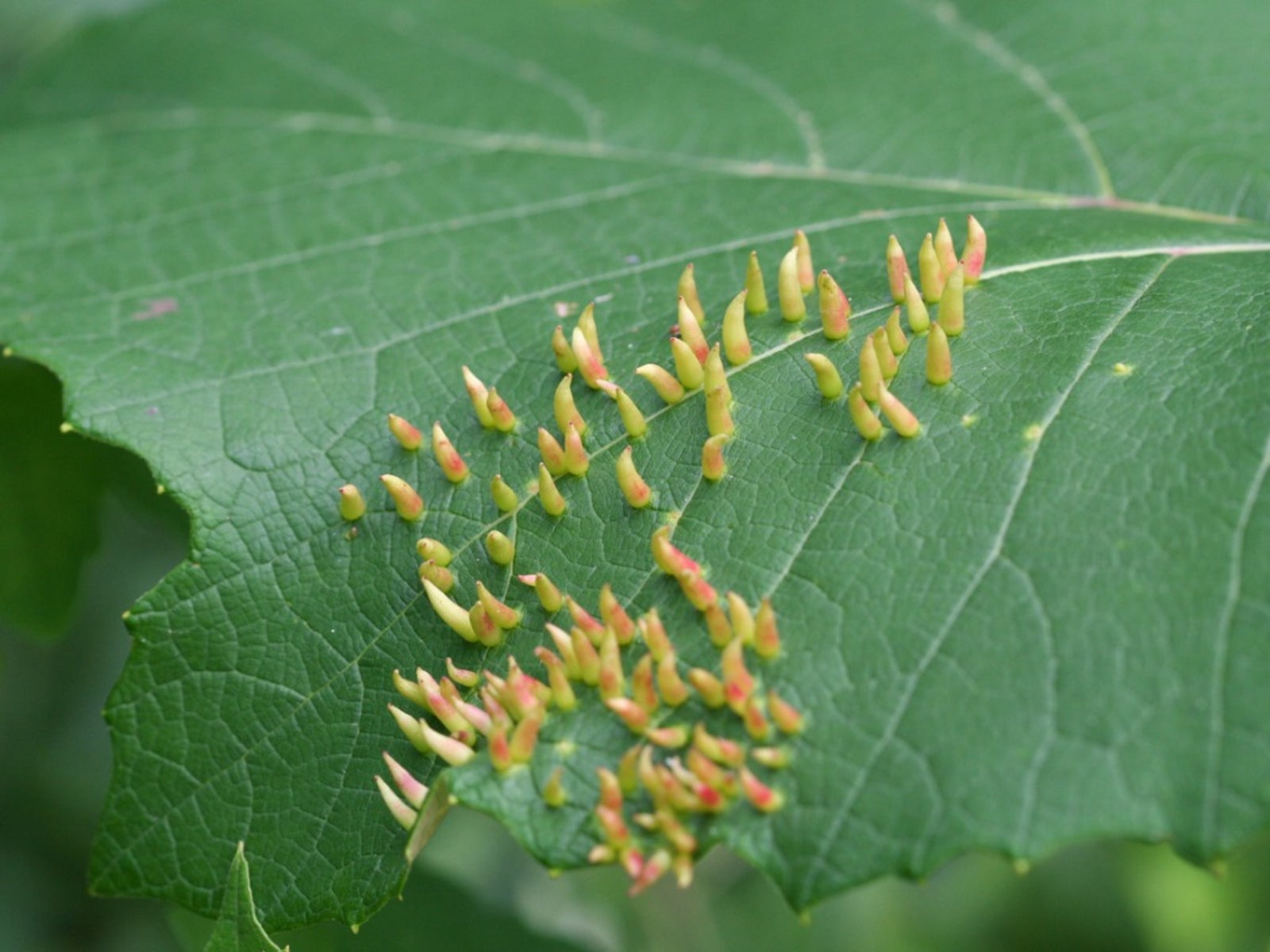What Are Spindle Galls – Tips On Spindle Gall Treatment


It’s amazing how many tiny things can live on a tree, without anyone really ever noticing. Such is the case of the Eriophyid mite, the cause of spindle galls on your tree leaves. When spindle galls get you down, take a look at this article for more information about them and how they affect your plants. Read on to learn about the fascinating process that creates spindle galls.
What are Spindle Galls?
Walking through a newly leafed forest or even just around your own garden in the springtime can reveal many breathtaking and astonishing sights. If you’re very lucky, you might even find some spindle galls. Although these interesting leaf deformations can at first appear like some sort of severe plant disease, the truth is that they’re very rarely dangerous to your plants. If your favorite tree has developed strange spiky growths on the upper surfaces of its leaves, you may immediately be concerned it’s an early sign of plant disease. Fortunately, spindle galls are not indicative of serious illness; instead, they’re the homes of tiny garden mites that feed on plants like yours. The Eriophyid mites are the causes of spindle galls. In the spring, these tiny mites emerge from their hiding places under bark, in cracks, or under bud scales and begin feeding on the newly opened leaves of landscape trees. Although this would normally be a fairly disturbing trend, because spindle gall mites are so small, the leaf is barely affected. Usually, the most serious effect is that infected leaves are tricked into encapsulating the mite, thus forming the very noticeable gall. Inside the gall, the mite is feeding, growing, and laying eggs. Don’t worry, the next generation won’t hang around long. Not only can spindle gall mites be easily blown on the wind, they also frequently hitch rides with visiting insects.
How to Treat Spindle Galls
There are certainly a few gall mites that require intervention, such as galls that cause leaf petioles to swell and result in the death of leaves, but spindle gall mites aren’t anything more than an inconvenience. You’ll even notice that they naturally wax and wane from year to year. Another mite that’s present on your plants, the Phytoseiid mite, is predatory and loves nothing more than to eat these spindle gall mites in abundance. Once you’ve seen galls on a plant, it’s too late to treat them anyway, since the insect is encased within the leaf tissue. It is because of these things; spindle gall treatment mostly consists of not panicking and learning to appreciate the many animals that call your landscape home. If infections in years past have been severe, you may want to think about treating mites this year but be advised that you can’t just kill the Eriophyid mites and leave the Phytoseiid mites alone. It’s a one and done scenario. If you want to eliminate all mites, spray your tree with miticide from top to bottom seven to ten days before bud break, or use a horticultural oil to disrupt mite life cycles once leaves have opened.
Gardening tips, videos, info and more delivered right to your inbox!
Sign up for the Gardening Know How newsletter today and receive a free copy of our e-book "How to Grow Delicious Tomatoes".

Kristi Waterworth was a regular contributor to Gardening Know How for many years, answering countless queries on plant pests and diseases.
-
 Looking For Plants To Give You The Soft And Fuzzies? Try These 5 Fuzzy Leaf Plant Options
Looking For Plants To Give You The Soft And Fuzzies? Try These 5 Fuzzy Leaf Plant OptionsLovers of texture, drama, silver foliage and tactile plants will adore these special sensory garden additions. These fuzzy leaf plant options will leave you all aglow
By Susan Albert
-
 Get Ready For A Summer Of Hummers! Grow These Full Sun Hummingbird Plants and Flowers
Get Ready For A Summer Of Hummers! Grow These Full Sun Hummingbird Plants and FlowersIf you’re lucky enough to enjoy a sunny backyard, make sure you are maxing out on your pollinator opportunities and grow these full sun hummingbird plants and flowers
By Tonya Barnett